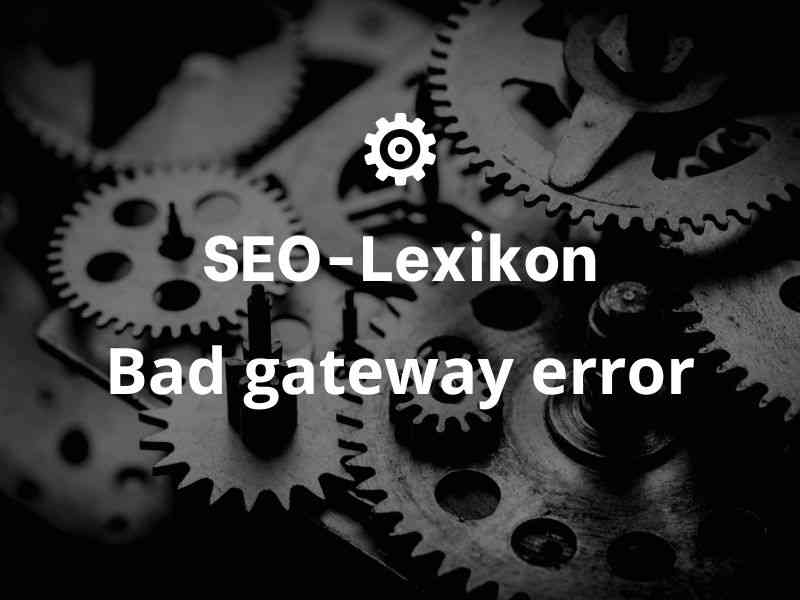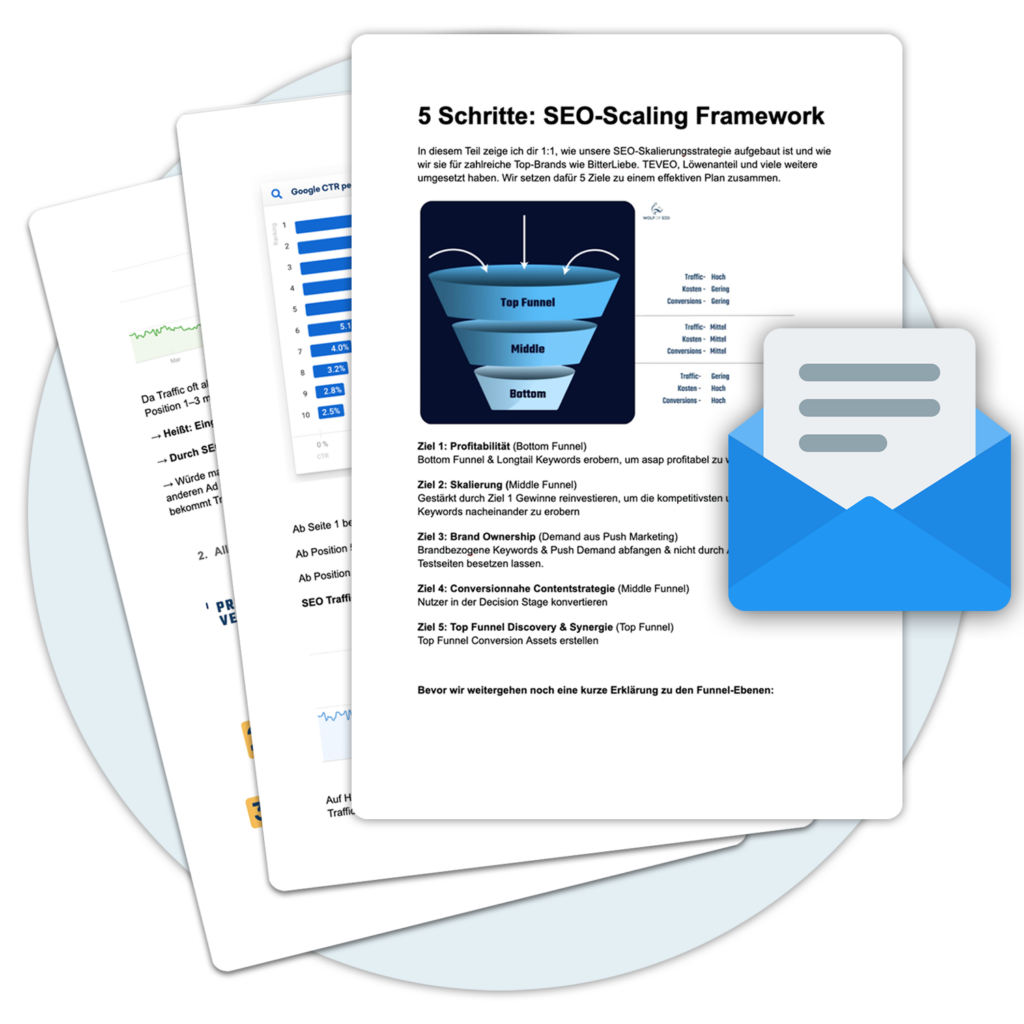Introduction to the Bad Gateway Error
The Bad Gateway error is an HTTP error status code that occurs when a server in a proxy environment attempts to forward a request to another server as a gateway or intermediary, but the server does not respond successfully.
It is important to understand that the Bad Gateway error is not always due to a fault in the original server, but often to problems in the communication between the servers involved. In most cases, the 502 Bad Gateway error occurs when a proxy server tries to wait for a response from an upstream server, but the upstream server does not respond in time or does not respond at all.
This error can be frustrating for both website visitors and website owners, as it causes interruptions in website navigation and can deter potential customers.
Addressing Bad Gateway errors is critical to providing users with a smooth website experience and avoiding any potential negative impact on SEO-Ranking to avoid.
Factors that can cause a bad gateway error
A Bad Gateway error can be caused by a number of factors. Here are some possible causes:
- Server overload: If a server is overloaded with too many requests, this can lead to a Bad Gateway error. For example, this can be caused by a sudden increase in website traffic or an inefficient server configuration.
- Problems with the proxy server: If a proxy server is misconfigured or not functioning properly, this can result in a Bad Gateway error. This can result in the client's request not being properly forwarded to the server.
- Network problems: Problems in the network, such as disconnections or congestion, can also lead to a Bad Gateway error. If the connection between the client and the server is down, the client's request cannot reach the server and a Bad Gateway error occurs.
- Incompatible protocols: If the client and server use different protocols or are unable to communicate with each other, this can result in a Bad Gateway error. For example, this may be the case if the client uses HTTP/2, but the server only supports HTTP/1.1.
It is important to consider these factors to avoid Bad Gateway errors and improve website performance. Regular monitoring of server load, proper proxy server configuration and stable network connection are crucial to minimize such errors.
Bad gateway error detection
The detection of a Bad gateway errors is crucial for detecting problems on a website early and fixing them quickly. There are several signs that indicate a 502 Bad Gateway can indicate errors:
- Slow loading times: Often Bad Gateway errors occur when the server is overloaded and the website cannot load fast enough.
- Error messages: When a Bad Gateway error occurs, users normally receive the message "502 Bad Gateway". This error message indicates a problem with the gateway server.
- Unexpected page content: Sometimes Bad Gateway errors can cause web pages not to load properly and display incorrect or incomplete content instead.
It is important to recognize these signs and verify if there is a Bad Gateway error so that action can be taken to correct the problem.
How often do bad gateway errors occur?
Bad Gateway errors can occur in various scenarios and their frequency varies depending on the individual circumstances of a website. However, there are certain factors that can cause Bad Gateway errors to occur more frequently.
A common cause of Bad Gateway errors is an overload on the server hosting the website. When the server is under a heavy load, for example, due to a sudden increase in traffic or heavy processes, a Bad Gateway error may occur.
Software problems can also cause Bad Gateway errors. If certain programs or applications on the server do not work properly or send incorrect requests, this can lead to a Bad Gateway error.
In addition, configuration errors or problems with the network can also cause bad gateway errors to occur. For example, if the connection between the server and the proxy server is unstable or misconfigured, this can lead to a bad gateway error.
It is important to note that while Bad Gateway errors can be annoying and disruptive, in most cases they are temporary. The server should be able to fix the problem on its own and restore normal website operation.
Bad gateway error handling
A 502 Bad Gateway Error occurs when the web server receives an invalid or unexpected response when trying to forward a request to another server. This can be due to various reasons, such as an overload on the target server, a faulty configuration, or a network connection failure.
In order to 502 Bad Gateway deal with errors and get the website up and running again, there are several short-term solutions that can be applied depending on the situation. These include:
- Empty cache: Emptying the Browser-caches can sometimes cause the error to be fixed.
- Refresh page: Refreshing the page may attempt to resend the request and receive a valid server response.
- Temporarily switching to another server: If the error occurs because the target server is overloaded, temporary redirection to another server can be considered.
- Verification of the server configuration: A faulty server configuration can also lead to a 502 Bad Gateway lead to errors. Checking and correcting configuration errors is therefore an important step in error handling.
In the long term, it is important to develop strategies to avoid 502 Bad Gateway Developing errors. This includes, among other things:
- Scaling of server capacity: Overloaded servers can lead to errors. Appropriate scaling of server capacity can reduce the likelihood of 502 Bad Gateway errors can be reduced.
- Network monitoring: Regular monitoring of the network connection can help to detect and correct problems at an early stage.
- Set up backup systems: Setting up backup systems can help ensure that in the event of a 502 Bad Gateway error, an alternative server connection is available.
As for the influence of 502 Bad Gateway errors on the SEO concerns, such errors can affect the Ranking of a website negatively. If a website is affected due to a 502 Bad Gateway error, this can lead to a poor user experience and affect users' trust in the website.
To improve the SEO optimization at 502 Bad Gateway errors, best practices such as regular monitoring, troubleshooting and optimization of server performance should be implemented.
All in all, it is important to know how to deal with 502 Bad Gateway errors seriously and to take appropriate measures for error handling and prevention. Through effective treatment and prevention of 502 Bad Gateway errors can improve the user experience and increase the Ranking of a website can be positively influenced.
Short-term solutions for bad gateway errors
When a Bad Gateway error occurs, it's important to take prompt action to minimize the impact on the site and the user. Here are some short-term solutions you can try to fix the problem:
- Reload page: First try to reload the affected page. Sometimes the error occurs only temporarily and disappears after reloading the page.
- Cookies and clear cache: Delete the Cookies and the cache of your browser. This will delete possible erroneous data and the page can be reloaded.
- VPN or use a proxy: If the error occurs only on a specific network connection, you can try to access the site through a VPN or proxy. This might help you avoid the problem.
- Alternative URL call Überprüfe, ob die betroffene Seite über eine alternative URL erreichbar ist. Manchmal funktionieren bestimmte Seiten oder Abschnitte einer Website, während andere nicht erreichbar sind.
Notice: These short-term solutions may serve to temporarily solve the problem, but should not be considered a permanent solution. It is advisable to identify the root cause of the Bad Gateway error and implement long-term strategies to prevent it.
Long-term strategies to avoid bad gateway mistakes
To avoid Bad Gateway errors in the long run, it's important to identify the root cause of the error and take appropriate action. Here are some strategies that can help:
- Optimization of the server infrastructure: Make sure your server has enough resources to withstand the demands of traffic. Regularly check server utilization and scale up as needed.
- Network traffic monitoring: Use network traffic monitoring tools to identify potential bottlenecks and bottlenecks early. This allows you to take timely countermeasures before a bad gateway failure occurs.
- Updating software and systems: Always keep your software and systems up to date to fix known bugs and security vulnerabilities. Regular updates are essential to ensure a stable and error-free website.
- Implementation of Caching-Technologies: Through the use of Caching-technologies, you can improve the speed of your website and reduce the server load. This reduces the risk of a bad gateway error.
- Use of a Content Delivery Networks (CDN): A CDN can help optimize content delivery and reduce the load on the origin server. This further reduces the likelihood of a bad gateway error.
- Regular inspection and troubleshooting: Perform regular checks of your website to detect potential sources of errors. Fix these errors promptly to ensure smooth operation of your website.
Conclusion: By implementing long-term strategies to prevent bad gateway errors, you can improve the stability and performance of your website. Through regular monitoring, optimization of server infrastructure, and implementation of modern technologies, you can reduce the risk of a bad gateway error and thus ensure an optimal user experience.
The influence of bad gateway errors on SEO
A bad gateway error can have a significant impact on SEO.Ranking of a website. When search engine crawlers are pointing to a 502 Bad Gateway errors, this may result in the web page not being indexed or that parts of the page are not displayed correctly. This results in potential visitors not being able to find the page and the organic Ranking of the website is negatively influenced.
To minimize the impact of bad gateway errors on SEO, it is important to identify and fix them quickly. Regular monitoring of website performance and the Status codes is essential. This allows timely action to be taken to fix problems and ensure that the website runs smoothly at all times.
Conclusion: Dealing with Bad Gateway Errors
A bad gateway error can be costly for a website, as it can result in visitors not being able to reach the page. To minimize the impact of such an error, it is important to act quickly and fix it. There are several measures that can be taken to deal with this problem.
1. first check if the error is actually on your website or if it is a temporary problem with your hosting provider. You may need to contact support to get more information.
2. a first step to fix the problem is to delete the Browser-caches and clearing the DNS cache. This may clear outdated data and fix the error.
3. if the problem persists, you should check your website server logs to see if any specific requests or resources are causing the error. You may need to disable or update certain plugins or scripts to fix the problem.
4. it can also help optimize the size of images and other files on your website. Large files can lead to longer loading times, which in turn can cause errors.
5. in the long run, it is important to make regular backups of your website to be able to react quickly in case of an error. Regular maintenance of your website can also help to reduce the frequency of such errors.
6 A good SEO strategy is also important to increase the visibility of your website and minimize the impact of bad gateway errors. Make sure you use high quality Content and update your website regularly.
Overall, it is important to take Bad Gateway errors seriously and act quickly to optimize the performance and availability of your website. Comprehensive troubleshooting and good website maintenance can help reduce the frequency of such errors and keep your visitors happy.
Further resources for Bad Gateway errors
If you want to learn more about Bad Gateway errors and how to fix them, there are a variety of resources that can help. Here are some recommended resources:
- MDN Web Docs: HTTP Status Code 502 - Bad Gateway
- Search Engine Land: How the 502 Bad Gateway Error Appears
- KeyCDN Support: Understanding the HTTP Error Code 502 Bad Gateway
- Think with Google: How to Fix 502 and 504 Gateway Errors
The above-mentioned resources provide comprehensive information, tips, and approaches to dealing with Bad Gateway errors. It is worth taking a closer look at them to solve the problem faster and ensure smooth operation of your website.
« Back to Glossary Index






